A SCLERODERMA JOURNEY
Site Overview
Hi My name is Nancy. I was diagnosed with Systemic Sclerosis (Scleroderma) over 13 years ago. I decided to create this website to promote awareness and hopefully provide some valuable resources. Since I started this website the path of my journey was altered and took on new directions. Though the scleroderma was severe when I started the site, my health and physical ability deteriorated more as the scleroderma even at these late stages became increasingly more active. I was no longer able to travel for any more trials. I could not remain full-time as I was unable to fullfull the duties of the position and my doctors said it was physically causing issues with my health. I started the disability process and was approved. The process and steps are recorded on my Disability Page. I still remain partime, mostly from home. You can view My Story here, and see the symptoms and progression of the disease as it affected me, but the goal of my site is to help those who have scleroderma or family and caregivers to have a quick start to good resources and/or physicians I have actually met. My personal goal was participating in clinical research studies, so hopefully better drugs, treatments, and ultimately a cure would be available for people diagnosed with scleroderma. I participated in the Cytori STAR Trial, and another trial for calcinosis. I’ve met wonderful doctors and researchers who are dedicated to finding a cure and better treatments for this disease. Though my situation has changed, I encourage anyone who can to participate.Recording Disease Progression
I think tracking the progression of the disease as it relates to you can be very beneficial for your care, your doctors information, and research. Regretfully I did not keep a personal record when I was diagnosed with the disease. The kind of personal tracking I am talking about is a journal of weekly or monthly changes along with pictures (almost everyone has a smart phone). Since scleroderma is different for everyone, how the disease manifests itself and progresses for each individual is valuable. The more information you record, the more complete the picture. Plus you will be providing informa- tion as it happens, instead of trying to recap it later.Participating in Clinical Trials and Info from Past Trials
If you have scleroderma and wish to participate in a trial, the best resource is www.clinicaltrials.gov . The site has the general search screen shown below, or you can select Advanced Search for more options to narrow it down. The quickest way is to type “SCLERODERMA” condition field, maybe with a few more keywords and click search. You will see results similar to below. The information provided includes a description of the trial, if it is active or completed, recruiting or not yet recording etc. If a trial is in progress you can view its history, if it is completed you can see the results of the trial. An excellent source of information.My Journey with Scleroderma
Prior to 13 years ago I was a runner, snow skier, water skier, golfer, scuba diver, and computer technician/database developer in a small town - enjoying life at it’s best. I started having some pain in my arms and wrists, and my fingers started swelling. I figured I had carpal tunnel - if only that had been the case. I went in for carpal tunnel testing, and was referred to a rheumatologist. It was suspect I had this disease called scleroderma. I read the pamphlet, looked on line, and said - “I don’t have that!”. Oh yes I did. Within six months, every week something new, I went from swollen fingers to skin so hard I couldn’t be touched. Elbows/ arms I couldn’t straighten, knees I couldn’t bend, eyebrows so tight and lifted, pain, fatigue - (which I thought was an excuse for being lazy). My legs and hips were so hard and stiff I couldn’t hardly walk a block and had to use my hands to lift my feet to get them up on top of the curb. The swollen fingers contracted to claws. What do you do? In my case, lie to yourself and everyone around you and try to hide it. It was my fault because I wasn’t exercising enough and it would just go away. Pretty hard to hide, and it just wouldn’t go away. At the time, most rheumatologists did not want to take on scleroderma patients. I was lucky to have found a new sceroderma clinic at the University of Minnesota that accepted me. They put me on treatment and worked with my local doctors and Jamestown Regional Medical Center for physical rehab. GOOD NEWS!! Specialists and research are expanding and working for a cure. Please see the resources and doctors/facilities I have listed. The Scleroderma Foundation website lists professionals and institutions that must meet certain criteria to be qualified. What now - 13 Years Later… I’m 56 now. The effects of scleroderma and aging are challenging, but I still consider myself lucky. I still have all my fingers and toes, support of my family, fiance of 32 years, friends and coworkers, and my employer. I’ve had some significant issues, but have been able to come back from them with the help of those who support me and my medical professionals. I am now on disability which I tried to avoid for a very long time. There comes a point which is different for everyone depending on your disease when you have to make that decision. Without any form of stable income, and no close family that can assist or support you it becomes a necessity. I was able to navigate the process successfully on my own without a lawyer, the steps and forms are documented on my Disability Page. I participated in the Cytori clinical trial designed to study the use of a patient’s own Adipose-Derived Regenerative Cells (ADRCs), prepared using the investigational Celution® Device, in the treatment of scleroderma affecting the hands and fingers. This type of stem cell research is being tested for may applications, and showing amazing results. The results of the trial indicated it did not work for scleroderma of the hands. I was also in a trial for a drug to treat calcinosis in scleroderma at Stanford University. If you are interested the trial is now in the final stages at clinicaltrials.gov click here for that particular trial. What is Scleroderma? Scleroderma, or systemic sclerosis, is a rare chronic connective tissue disease. The exact cause or causes of scleroderma are still unknown. It is known that scleroderma involves an overproduction of collagen. Currently, there is no cure for scleroderma. See more … The word “scleroderma” comes from two Greek words: “sclero” meaning hard, and “derma” meaning skin. Hardening of the skin is one of the most visible manifestations of the disease. There are different types of the disease. I have Systemic scleroderma (systemic sclerosis). The changes occurring in systemic scleroderma may affect the connective tissue in many parts of the body. Systemic scleroderma can involve the skin, esophagus, gastrointestinal tract (stomach and bowels), lungs, kidneys, heart and other internal organs. It can also affect blood vessels, muscles and joints. The tissues of involved organs become hard and fibrous, causing them to function less efficiently. The term systemic sclerosis indicates that “sclerosis” (hardening) may occur in the internal systems of the body. There are two major recognized patterns that the illness can take - diffuse or limited disease. In diffuse scleroderma, skin thickening occurs more rapidly and involves more skin areas than in limited disease. In addition, people with diffuse scleroderma have a higher risk of developing “sclerosis” or fibrous hardening of the internal organs. What causes scleroderma? The exact cause or causes of scleroderma are still unknown, but scientists and medical researchers are working hard to make those determinations. It is known that scleroderma involves an overproduction of collagen. Contact Me scleroderma@daktel.com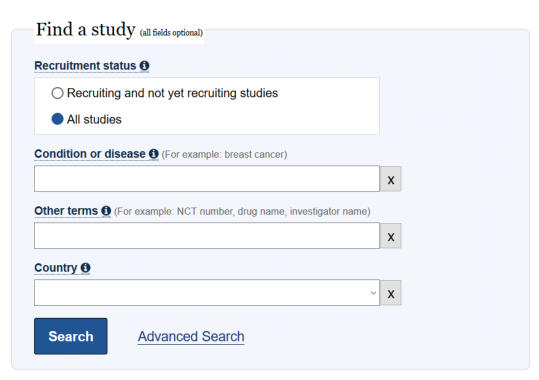

“Scleroderma showed up and
changed my life and my body
in 6 months.”










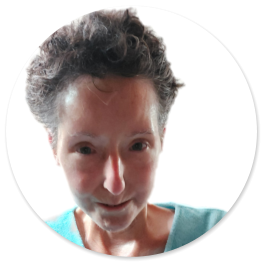
2021

Scleroderma of the Hands: PHASES CALCINOSIS RAYNAUD’S

DISABILITY and SCLERODERMA My steps of going
through the the disability process and examples of how I filled out
forms.
Site Overview
Hi My name is Nancy. I was diagnosed with Systemic Sclerosis (Scleroderma) over 13 years ago. I decided to create this website to promote awareness and hope- fully provide some valuable resources. Since I started this website the path of my journey was altered and took on new directions. Though the scleroderma was severe when I started the site, my health and physical ability deteriorated more as the scleroderma even at these late stages became increasingly more active. I was no longer able to travel for any more tri- als. I could not remain full-time as I was unable to fullfull the duties of the posi- tion and my doctors said it was physi- cally causing issues with my health. I started the disability process and was approved. The process and steps are recorded on my Disability Page. I still remain partime, mostly from home. You can view My Story here, and see the symptoms and progression of the disease as it affected me, but the goal of my site is to help those who have scleroderma or family and caregivers to have a quick start to good resources and/or physicians I have actually met. My personal goal was participating in clinical research studies, so hopefully better drugs, treatments, and ultimately a cure would be available for people di- agnosed with scleroderma. I participated in the Cytori STAR Trial, and another trial for calcinosis. I’ve met wonderful doctors and researchers who are dedicated to finding a cure and better treatments for this disease. Though my situation has changed, I encourage anyone who can to participate.Recording Disease Progression
I think tracking the progres- sion of the disease as it relates to you can be very beneficial for your care, your doctors in- formation, and research. Regretfully I did not keep a personal record when I was diagnosed with the disease. The kind of personal tracking I am talking about is a journal of weekly or monthly changes along with pictures (almost everyone has a smart phone). Since scleroderma is dif- ferent for everyone, how the disease manifests itself and progresses for each individual is valuable. The more information you record, the more complete the picture. Plus you will be providing information as it happens, instead of trying to recap it later.Participating in Clinical Trials and
Info from Past Trials
If you have scleroderma and wish to participate in a trial, the best resource is www.clinicaltrials.gov . The site has the general search screen shown below, or you can select Advanced Search for more options to narrow it down. The quickest way is to type “SCLERODERMA” condition field, maybe with a few more keywords and click search. You will see results similar to below. The information provided includes a descrip- tion of the trial, if it is active or com- pleted, recruiting or not yet recording etc. If a trial is in progress you can view its history, if it is completed you can see the results of the trial. An excellent source of information.My Journey with Scleroderma
Prior to 13 years ago I was a runner, snow skier, water skier, golfer, scuba diver, and computer technician/database developer in a small town - enjoying life at it’s best. I started having some pain in my arms and wrists, and my fingers started swelling. I figured I had carpal tunnel - if only that had been the case. I went in for carpal tunnel testing, and was referred to a rheumatologist. It was suspect I had this disease called scleroderma. I read the pamphlet, looked on line, and said - “I don’t have that!”. Oh yes I did. Within six months, every week something new, I went from swollen fingers to skin so hard I couldn’t be touched. Elbows/ arms I couldn’t straighten, knees I couldn’t bend, eye- brows so tight and lifted, pain, fatigue - (which I thought was an excuse for being lazy). My legs and hips were so hard and stiff I couldn’t hardly walk a block and had to use my hands to lift my feet to get them up on top of the curb. The swollen fingers contracted to claws. What do you do? In my case, lie to yourself and everyone around you and try to hide it. It was my fault because I wasn’t exercising enough and it would just go away. Pretty hard to hide, and it just wouldn’t go away. At the time, most rheumatologists did not want to take on scleroderma patients. I was lucky to have found a new sceroderma clinic at the University of Minnesota that accepted me. They put me on treatment and worked with my local doctors and Jamestown Regional Medical Center for physical rehab. GOOD NEWS!! Specialists and research are expanding and working for a cure. Please see the resources and doctors/facilities I have listed. The Sclero- derma Foundation website lists professionals and institutions that must meet certain criteria to be qualified. What now - 13 Years Later… I’m 56 now. The effects of scleroderma and aging are challenging, but I still con- sider myself lucky. I still have all my fingers and toes, support of my family, fiance of 32 years, friends and cowork- ers, and my employer. I’ve had some significant issues, but have been able to come back from them with the help of those who support me and my medical professionals. I am now on disability which I tried to avoid for a very long time. There comes a point which is dif- ferent for everyone depending on your disease when you have to make that deci- sion. Without any form of stable income, and no close family that can assist or support you it becomes a necessity. I was able to navigate the process successfully on my own without a lawyer, the steps and forms are documented on my Dis- ability Page. I participated in the Cytori clinical trial designed to study the use of a patient’s own Adipose-Derived Regenerative Cells (ADRCs), prepared using the investiga- tional Celution® Device, in the treatment of scleroderma affecting the hands and fingers. This type of stem cell research is being tested for may applications, and showing amazing results. The results of the trial indicated it did not work for scleroderma of the hands. I was also in a trial for a drug to treat calcinosis in scle- roderma at Stanford University. If you are interested the trial is now in the final stages at clinicaltrials.gov click here for that particular trial. What is Scleroderma? Scleroderma, or systemic sclerosis, is a rare chronic connective tissue disease. The exact cause or causes of scleroderma are still unknown. It is known that scle- roderma involves an overproduction of collagen. Currently, there is no cure for scleroderma. See more … The word “scleroderma” comes from two Greek words: “sclero” meaning hard, and “derma” meaning skin. Hardening of the skin is one of the most visible manifesta- tions of the disease. There are different types of the disease. I have Systemic scleroderma (systemic sclerosis). The changes occurring in sys- temic scleroderma may affect the connective tissue in many parts of the body. Systemic scleroderma can involve the skin, esophagus, gastrointestinal tract (stomach and bowels), lungs, kidneys, heart and other internal organs. It can also affect blood vessels, muscles and joints. The tissues of involved organs be- come hard and fibrous, causing them to function less efficiently. The term sys- temic sclerosis indicates that “sclerosis” (hardening) may occur in the internal systems of the body. There are two major recognized patterns that the illness can take - diffuse or limited disease. In dif- fuse scleroderma, skin thickening occurs more rapidly and involves more skin areas than in limited disease. In addition, people with diffuse scleroderma have a higher risk of developing “sclerosis” or fibrous hardening of the internal organs. What causes scleroderma? The exact cause or causes of scleroderma are still unknown, but scientists and medical researchers are working hard to make those determinations. It is known that scleroderma involves an over- production of collagen. Contact Me scleroderma@daktel.com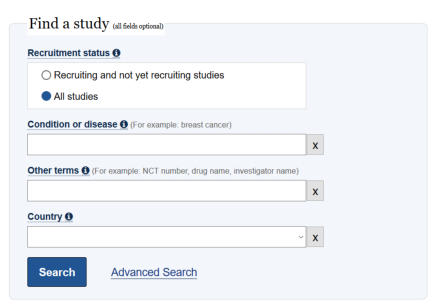
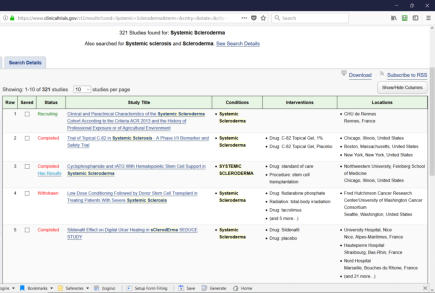





“Scleroderma showed up and
changed my life and my body
in 6 months.”





A SCLERODERMA JOURNEY
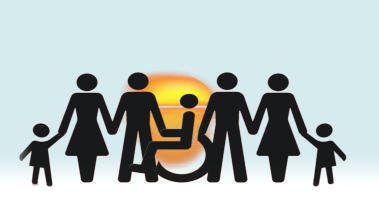
DISABILITY and SCLERODERMA
My steps of going through the the disability
process and examples of how I filled out
forms.

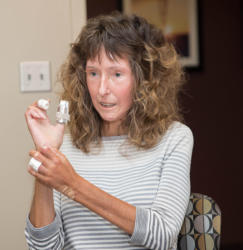



Scleroderma of the Hands:
PHASES CALCINOSIS RAYNAUD’S
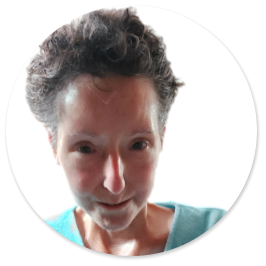
2021





















